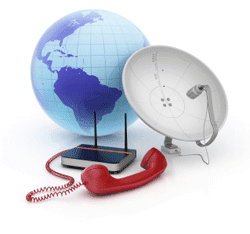Whether you specialize in building and maintaining wireless networks, satellite communications, or in creating the latest Wi-Fi reading application, you always want to grow your market share or get your new projects approved or funded.
These days, when competition is fast and global, it’s vital to constantly increase your client list or customer base, secure new projects, and form new partnerships.
After you identify a potential new project or beneficial relationship, how do you go about convincing the other party? The telecommunications business is complex: a brochure, phone call, or handshake is not likely to seal a new deal. You almost always need to spell out a lot of details, which means you need to write a business proposal.
If you’ve never written anything other than memos or in-house reports, the prospect of writing a proposal may sound like a monumental task. But it doesn’t have to be. All business proposals have the same goal—persuading the reader to agree to your ideas—and the best proposals share a common structure, too.
The first thing you should know is that a good proposal should always be customized for your potential customer or partner. Of course you’ll talk about your products and your organization, but you should describe them in terms of how they will meet the needs of the other party. To start, gather all the information you can find about the people who will be reading your proposal. What, precisely, is their business? What is their organization’s history? What do they care about? What do they already know about you, your project, or your products? What questions will they have? As you may have guessed, the biggest question most organizations have is “What’s in it for us?” So keep the benefits to your potential customer or partner first and foremost in your mind as you create your proposal.
A proposal has four basic parts: introduction, description of needs and requirements, description of project or goods or services offered, and description of your organization’s expertise.
When your reader opens your proposal packet, the first thing he or she should see is a Cover Letter introducing your proposal. Keep this short—just introduce yourself, explain why you are sending your proposal at this time, state what you would like the reader to do after considering the proposal (call you, sign the enclosed contract, set up a meeting, etc.), and provide all your contact information.
The next page should be a Title Page for your proposal. Simply give it a descriptive name. Some examples might be “Proposed Expansion of Transmission Network to Expand Wireless Coverage Area” or “Proposal by Smith Company to Provide Cell Phone and Internet Services to Jones Corporation.” If your proposal is long or complex, next you’ll want to include a Table of Contents and an Executive Summary—a list of the most important points. But you will need to create them after you’re done with the body of the proposal.
On to the next section: the description of needs and requirements. Put yourself in your potential client’s or partner’s position. What do they want or need? If you are responding to an RFP, that will be spelled out in detail in the RFP and you can simply repeat that information here. In other cases, you have to describe it for the reader. For example, one company’s traveling sales reps might need reliable, long lasting cell phones that can easily share information with company computers; another company might require cutting edge security software to encrypt their sensitive global transmissions. As well as describing the needs in this section, describe any requirements or limitations you know about. These might be costs, deadlines, or specific details such as devices, operating platforms, download speed, ability to interface with multiple networks in multiple countries, etc. In this section, you’ll have pages with titles like Problem Statement, Needs Assessment, or Goals and Objectives, as well as Requirements, Specifications, Performance Requirements, Interface Requirements, Limitations, Deadlines, Schedule, Market Demand and any other topic pages you need to describe the current situation.
 |
| Proposal Pack Telecom #1 |
In the final section of your proposal, it’s time to explain why the proposal reader should pick you as a partner or supplier. Here, you’ll provide information about your Company History and Clients Served, similar Projects you’ve worked on, your Expertise, any special Certifications or Training you have, and perhaps information about your Team Members or company Personnel who will work on the project. If you have Awards, Achievements, Referrals, or Testimonials, include them in this section.
Now you have a first draft of your proposal. Take the time to proofread it carefully and make every page look and sound as professional as possible. Consider using special fonts or splashes of color to make it look attractive. Visual appeal is especially important in competitive situations where you need your proposal to stand out.
The more proposals you write, the easier the process will become, because you’ll reuse information and some topic pages will be the same in every proposal. However, always remember that customization is the best key to success—be sure to tailor each proposal to the specific organization and readers you are targeting, and explain how your ideas will benefit them and meet their needs.



No comments:
Post a Comment